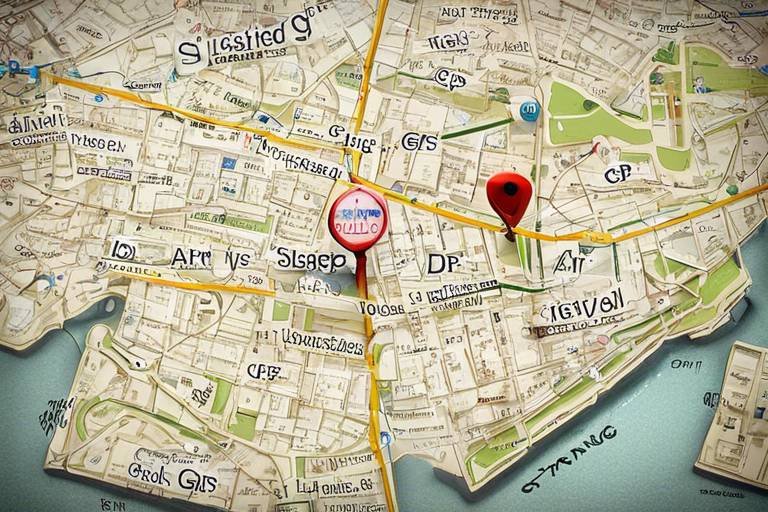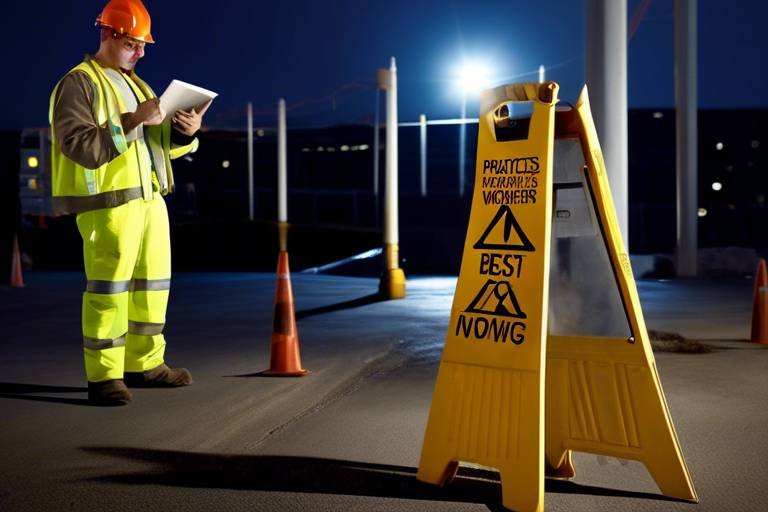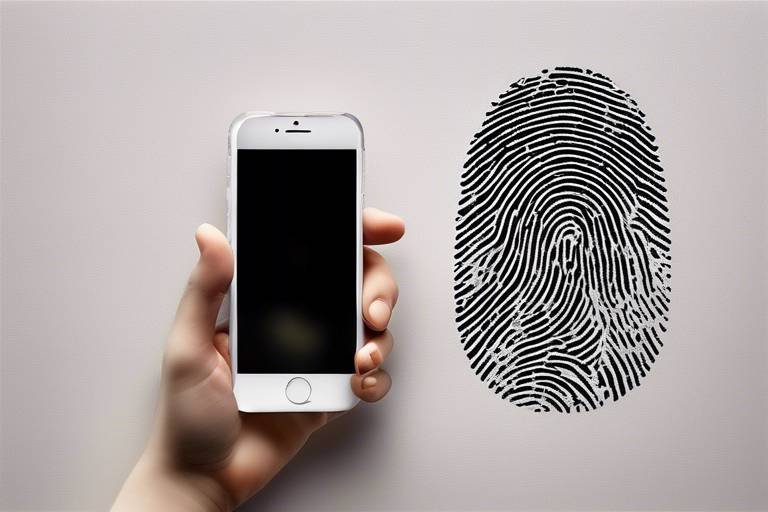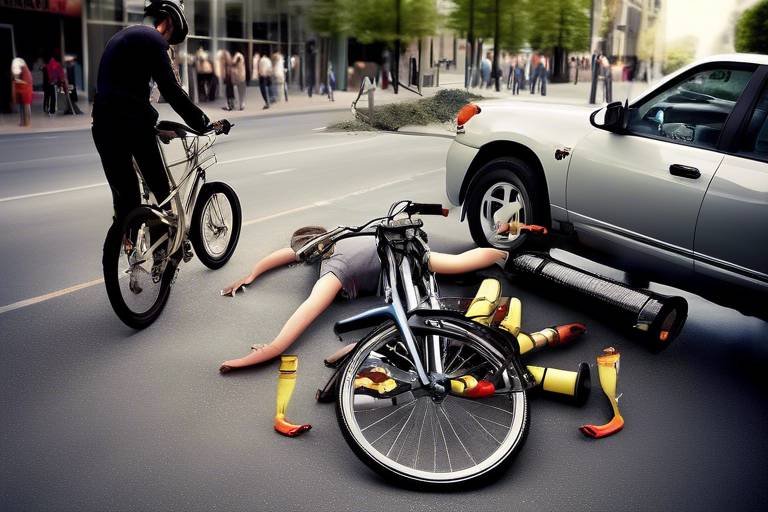The Art of Getting Lost - Staying Safe When Your GPS Fails
In a world where we rely heavily on our smartphones and GPS devices for navigation, the thought of getting lost can be both terrifying and exhilarating. Imagine this: you're on a scenic road trip, the sun is shining, and suddenly your GPS goes haywire. Panic sets in, but what if I told you that getting lost could lead to unexpected adventures? Embracing the art of getting lost means honing your traditional navigation skills, which can be invaluable when technology fails. In this article, we’ll explore practical tips for staying safe and finding your way, even when your trusty GPS lets you down.
When it comes to navigation, understanding traditional methods—like using maps and compasses—can significantly enhance your ability to find your way. Think of it this way: while GPS is like a crutch, traditional navigation skills are the muscles that help you stand strong. Knowing how to read a map or use a compass can transform a potentially stressful situation into a manageable one. It’s all about being prepared and confident in your abilities. So, let’s dive into how you can develop these crucial skills and keep your adventures safe and enjoyable.
Before embarking on any adventure, proper preparation is key. This means packing the right tools, studying your route, and being aware of your surroundings. A little preparation can go a long way in ensuring a safe journey. Imagine setting off on a hike without a map or compass—it's like diving into a pool without checking for water! Here are some essential steps to take before you hit the road:
Carrying a physical map, a compass, and other navigational tools can be invaluable when technology fails. But it’s not just about having these tools; knowing how to use them effectively is crucial. For instance, a map can provide a wealth of information about the terrain, while a compass can help you maintain your direction. Together, they create a powerful navigation duo. Here’s a quick rundown of essential tools you should consider:
- Physical Map: A detailed map of the area you are exploring.
- Compass: A reliable compass to help you orient yourself.
- First Aid Kit: Essential for any unexpected emergencies.
- Flashlight: For visibility in low-light conditions.
Selecting the appropriate type of map for your journey can significantly affect your navigation experience. Whether it’s a topographic map that highlights elevation changes or a road map that shows the best routes, knowing what to choose based on your adventure is vital. Always consider the type of terrain you’ll be traversing and pick a map that suits your needs.
Understanding how to read a compass and align it with your map can help you determine your direction, even in unfamiliar terrain. Picture this: you’re standing in a dense forest, and the trees obscure your view. A compass can act as your guiding star, pointing you towards your destination. Practice using your compass before you head out, so you’re not fumbling around when you really need it.
Recognizing natural and man-made landmarks can guide you during your journey. Familiarizing yourself with the terrain enhances your ability to navigate without GPS. For example, if you know that a large lake lies to the east of your route, you can use that as a reference point. Observing the landscape around you not only enriches your experience but also helps you stay oriented. Remember, the world is full of clues; all you have to do is pay attention!
Safety should always be a priority when exploring new areas. Being aware of your environment and potential hazards can help you avoid dangerous situations. Whether you're hiking in the mountains or driving through a remote countryside, it's essential to stay alert and prepared for anything that might come your way. After all, the goal is to enjoy your adventure, not to end up in a sticky situation!
Evaluating potential risks, such as wildlife or difficult terrain, is crucial. Understanding what to watch out for can help you stay safe and make informed decisions. For instance, if you're hiking in bear country, knowing how to store your food properly can prevent unwanted encounters. Always take a moment to assess your surroundings and be mindful of any signs of danger.
Having a plan in place for emergencies, including first aid supplies and communication devices, ensures you are prepared for unexpected situations while navigating without GPS. Imagine you twist an ankle in the middle of nowhere—having a first aid kit and a way to communicate can be a lifesaver. Always pack essentials and inform someone about your plans before heading out. It’s better to be over-prepared than caught off guard!
Q: What should I do if my GPS fails while driving?
A: Stay calm! Pull over safely, take out your map, and identify your current location. Use landmarks and road signs to guide you.
Q: How can I improve my map-reading skills?
A: Practice by navigating local parks or trails using a physical map. Familiarize yourself with symbols and scales.
Q: What items should I always carry for navigation?
A: Always have a physical map, a compass, a first aid kit, water, snacks, and a flashlight in your pack.

The Importance of Traditional Navigation Skills
In an age where our smartphones and GPS devices are our constant companions, it’s easy to forget the value of traditional navigation skills. Imagine you’re hiking in a remote area, the sun is setting, and your phone dies. Panic sets in, but if you have a solid grasp of traditional navigation methods, you can turn that panic into confidence. Traditional navigation skills are not just relics of the past; they are essential tools that empower you to explore the world around you safely and effectively.
Understanding how to navigate without the aid of technology can significantly enhance your ability to find your way when modern devices fail. Let’s break down why these skills are crucial. First, traditional navigation methods, such as reading maps and using compasses, can provide you with a sense of direction that is often lost in the digital age. While GPS can be incredibly accurate, it’s also susceptible to errors caused by poor signals or dead batteries. In contrast, a physical map and a compass are reliable and can guide you through even the most challenging terrains.
Moreover, traditional navigation encourages a deeper connection with your surroundings. When you learn to read a map, you’re not just looking at lines and symbols; you’re engaging with the landscape itself. You start to notice the hills, rivers, and valleys that define the area, which can enhance your overall experience. It’s like reading a book where each page reveals a new adventure, and you are the author of your journey.
Let’s also consider the mental aspect of navigation. Relying solely on GPS can make you passive in your exploration. You might find yourself just following a dot on a screen, missing out on the beauty and intricacies of the world around you. In contrast, using traditional navigation techniques requires active engagement. You’re constantly assessing your position, observing your environment, and making decisions based on your findings. This not only keeps your mind sharp but also instills a sense of accomplishment when you successfully navigate to your destination.
To put it simply, traditional navigation skills are like a safety net. They provide you with the knowledge and tools to navigate confidently, even when technology fails. So, whether you’re planning a weekend hike, a road trip, or even just a stroll through a new city, remember that embracing these skills can make all the difference. You never know when you might need them!

Preparing for Your Journey
Before you embark on any adventure, whether it’s a weekend hike or a cross-country road trip, preparation is key. Imagine setting off into the wilderness without a plan—it's like jumping into a pool without checking if there's water! You wouldn't do that, right? So, let's ensure you're fully equipped and ready to tackle whatever comes your way.
First and foremost, study your route. This means not just glancing at your GPS but actually looking at a physical map or a reliable navigation app. Familiarize yourself with the roads, trails, and any potential detours you might encounter. Understanding the geography of your destination can give you a significant edge. For instance, if you're hiking in a mountainous area, knowing where the steep climbs and valleys are can help you pace yourself better and avoid exhaustion.
Next, consider the tools you'll need for your journey. While smartphones and GPS devices are fantastic, they can fail at the most inconvenient times. Thus, packing essential navigational tools is crucial. Here are a few must-haves:
- Physical Map: Always carry a detailed map of the area. It’s your safety net when technology lets you down.
- Compass: A basic compass is invaluable. Knowing how to use it can guide you back to safety.
- First Aid Kit: Accidents happen; be prepared for minor injuries.
- Water and Snacks: Keep your energy up with enough hydration and food.
- Flashlight: In case you find yourself out after dark, a flashlight can make all the difference.
Moreover, it's essential to be aware of your surroundings. Before you leave, take a moment to observe the area around you. What are the prominent landmarks? Are there any signs that might help you navigate? This knowledge can be a lifesaver. Just like a sailor uses the stars to guide their ship, you can use the sun, mountains, and rivers to orient yourself.
Lastly, remember that communication is vital. Let someone know your plans before you head out, including your expected return time. In the event of an emergency, having a buddy system in place can provide an extra layer of safety. Think of it as having a backup parachute when skydiving; it’s always better to be safe than sorry!
In conclusion, preparing for your journey is not just about packing your bags; it’s about ensuring you have the right tools, knowledge, and mindset to navigate the unexpected. With a little foresight and preparation, you can transform a potential disaster into a memorable adventure. So, gear up, stay alert, and enjoy the journey ahead!

Essential Tools for Navigation
When it comes to navigating the great outdoors, relying solely on technology can be a risky gamble. Sure, smartphones and GPS devices are incredibly convenient, but what happens when the battery dies or you find yourself in an area with no signal? That's where traditional navigation tools come into play, and they can be your best friends in times of uncertainty. Having the right tools on hand not only boosts your confidence but also ensures that you can find your way, no matter the circumstances.
First and foremost, a physical map is an absolute must-have. Unlike electronic devices that can fail, a good old-fashioned map is reliable and doesn’t require a power source. But not all maps are created equal! Depending on your adventure, you might need a topographic map that highlights elevation changes, or perhaps a road map that provides a broader view of the area. Understanding how to read these maps is crucial. For instance, topographic maps are great for hiking as they show the lay of the land, while road maps are better suited for longer road trips.
Next on the list is a compass. This small, simple tool can be a lifesaver. Knowing how to use a compass effectively can mean the difference between wandering aimlessly and confidently heading in the right direction. To use a compass, you need to align it with your map. This means finding your current location on the map, then rotating the compass until the needle points north. Once you have your bearings, you can set your course. It’s like having a secret weapon in your back pocket—once you master it, you’ll feel like a true explorer!
Besides maps and compasses, there are a few other tools that can enhance your navigation experience. Consider carrying a GPS device as a backup, but remember, it should never replace your primary navigation methods. A whistle can also be handy for signaling for help if you find yourself in a tight spot. Additionally, a multi-tool can serve various purposes, from making repairs to preparing food, which is essential for longer journeys. And let’s not forget about a good flashlight or headlamp for those unexpected late-night adventures!
In summary, while technology has its perks, having a solid set of traditional navigation tools can significantly enhance your outdoor experience. Whether you’re hiking through the woods or driving through unfamiliar territory, being prepared with a map, compass, and a few additional tools can keep you safe and on course. So, before you embark on your next adventure, make sure you pack these essentials. After all, getting lost can be fun, but only when you know how to find your way back!

Choosing the Right Map
When it comes to navigating the great outdoors, can make all the difference between a successful adventure and a frustrating detour. Just like a chef selects the finest ingredients for a dish, you need to pick the right map that caters to your journey's needs. Different maps serve different purposes, so understanding what each type offers is crucial. For instance, if you're planning a hike in rugged terrain, a topographic map is your best friend. These maps provide detailed elevation information and can help you anticipate the challenges of the landscape.
On the other hand, if you're driving through a city or along a scenic route, a road map would be more appropriate. Road maps focus on highways, streets, and points of interest, making them ideal for navigating urban environments. It’s like choosing between a recipe for a fancy dinner versus a quick snack; each has its time and place. To make the best choice, consider the following factors:
- Purpose of Your Journey: Are you hiking, driving, or exploring a new city? Your map should align with your plans.
- Detail Level: How much detail do you need? Topographic maps offer intricate details about elevations and landforms, while road maps provide a broader view of highways and routes.
- Scale: The scale of the map determines how much area is covered. A larger scale means more detail but less area, and vice versa.
Furthermore, don't overlook the importance of map legends and symbols. Understanding what the symbols represent is akin to knowing the secret ingredients in a family recipe. For example, a blue line might indicate a river, while a dotted line could represent a trail. Familiarizing yourself with these symbols before your journey can save you time and confusion.
Lastly, consider the format of the map. Traditional paper maps are reliable and don’t require batteries, but digital maps can be more convenient. If you opt for a digital map, always have a backup plan in case your device fails. Carrying a physical map alongside your digital one ensures that you’re prepared for any scenario. In essence, choosing the right map is not just about picking a piece of paper or a screen; it’s about setting the stage for a successful adventure. So, before you head out, take a moment to reflect on your map choice—it might just be the compass that keeps you on track!

Using a Compass Effectively
Using a compass might seem like a lost art in our GPS-driven world, but it can be your best friend when technology lets you down. Imagine you’re deep in the woods, surrounded by towering trees and the only sound is the rustle of leaves. Your phone? It’s out of battery. Panic sets in, but wait! You have your trusty compass. Understanding how to use it can transform a potentially stressful situation into a manageable one.
First things first, let’s talk about the basic components of a compass. A typical compass has a base plate, a rotating bezel, and a magnetic needle. The needle always points to magnetic north, which is your starting point for navigation. To use it effectively, you need to know how to orient the compass with your map. This is where the magic happens!
To start, lay your map flat on a surface. Place the compass on the map, aligning the edge of the base plate with the direction you want to travel. Now, here’s the key: rotate the bezel until the orienting arrow matches the magnetic needle. This ensures that your map and compass are aligned with the same reference point. If you’ve done this correctly, you’ll have a clear direction to follow. It’s like finding a hidden treasure map where you’re the treasure!
When you’re out and about, keep a few tips in mind:
- Practice Makes Perfect: Familiarize yourself with your compass before embarking on your adventure. Try navigating in your backyard or a local park.
- Stay Aware: Always keep an eye on your surroundings. Landmarks can serve as guides, and knowing how to relate them to your compass reading can save you time and confusion.
- Regularly Check Your Direction: As you move, periodically check your compass to ensure you’re still on track. It’s easy to get sidetracked, especially in dense terrain.
Remember, a compass is a simple tool, but its effectiveness lies in your ability to use it correctly. Think of it as your personal guide, leading you through the maze of nature. And while technology is great, knowing how to navigate with a compass gives you a sense of empowerment and confidence that no app can replicate.
So, next time you plan an adventure, don’t just rely on your GPS. Pack a compass, learn how to use it, and embrace the thrill of getting lost—because sometimes, the best journeys are the ones that lead you to unexpected places.
Q1: Can I use my smartphone compass instead of a traditional compass?
A1: Yes, most smartphones have a built-in compass, but remember that they rely on battery power and can be affected by environmental factors. It’s always good to have a traditional compass as a backup.
Q2: How do I know if my compass is working correctly?
A2: To test your compass, hold it level and rotate it. The needle should always point to magnetic north. If it doesn’t, check for nearby metal objects or electronic devices that might be interfering.
Q3: What should I do if I get lost?
A3: Stay calm! Use your compass to determine your direction, look for landmarks, and retrace your steps if possible. If you have a map, compare it with your surroundings to find your way.

Understanding Landmarks and Terrain
When you're out exploring, the world around you is filled with landmarks that can guide you, even when your trusty GPS is out of commission. Think of landmarks as the signposts of nature—they're like old friends that help you find your way home. Whether it's a towering mountain, a distinctive tree, or a unique building, recognizing these features can significantly enhance your navigation skills. But how do you effectively use these natural and man-made markers to your advantage?
First off, it’s essential to familiarize yourself with the terrain you’ll be traversing. Different landscapes present different challenges and opportunities. For instance, navigating through a dense forest is a lot different from hiking across open plains. Each environment has its own set of landmarks that can help you orient yourself. Mountains, rivers, and valleys can serve as excellent reference points, while roads and buildings can offer clues in urban areas.
Moreover, understanding the topography of a region can provide insights into your surroundings. Topographic maps, which illustrate the physical features of the land, can be invaluable. They show elevation changes, which can help you predict how difficult a hike might be. If you know a steep hill lies ahead, you can prepare yourself mentally and physically. Without this knowledge, you might find yourself unexpectedly exhausted, wondering why the hike seemed so much harder than anticipated.
When you’re out there, take a moment to observe your surroundings. Here are some tips to help you effectively use landmarks and terrain:
- Look for Unique Features: Identify distinctive landmarks that stand out. A uniquely shaped rock or a specific tree can act as a mental marker.
- Use Natural Light: The position of the sun can help you determine direction. For instance, the sun rises in the east and sets in the west, which can guide you during the day.
- Pay Attention to Your Surroundings: Familiarize yourself with the local flora and fauna. Certain plants or animals might only exist in specific areas, which can help you navigate.
Remember, the more you practice recognizing and utilizing landmarks and terrain, the more intuitive your navigation skills will become. You’ll start to see the world not just as a series of paths and roads, but as a rich tapestry of features that can lead you safely to your destination. So, next time you head out, take a moment to look around and appreciate the landscape—your journey might just become a lot more enjoyable!
Q: What should I do if I get lost without GPS?
A: Stay calm! Look for recognizable landmarks around you, and try to retrace your steps. If you have a map and compass, use them to find your way back.
Q: How can I prepare for navigation without technology?
A: Familiarize yourself with traditional navigation methods, carry a physical map and compass, and practice reading them before your trip.
Q: What are some common landmarks to look for?
A: Look for mountains, rivers, distinctive trees, buildings, or any unique features that stand out in your environment.
Q: How does terrain affect navigation?
A: Different terrains present different challenges; for example, navigating through dense forests can be more complicated than open fields. Understanding the terrain can help you prepare for the journey ahead.

Staying Safe While Navigating
When you're out there exploring the great outdoors, it's easy to get caught up in the excitement of adventure. However, staying safe while navigating should always be your top priority. Imagine you're hiking through a dense forest, the sun is setting, and your GPS suddenly fails. What do you do? It’s in these moments that having a solid understanding of your surroundings and a few safety tips can make all the difference. So, let's dive into some practical advice that will keep your explorations both thrilling and secure.
First off, being aware of your environment is crucial. This means not just looking at your immediate surroundings, but also understanding the broader landscape. Familiarize yourself with the area before you set out. Are there any potential hazards like steep cliffs, fast-moving rivers, or wildlife? Knowing what to expect can help you stay alert and avoid dangerous situations. For instance, if you're hiking in bear country, it's wise to carry bear spray and know how to use it. Similarly, if you're in an area prone to sudden weather changes, packing appropriate gear is essential.
Next, let’s talk about emergency preparedness. It’s not just a buzzword; it’s a lifeline. Always have a plan for unexpected situations. This includes carrying a first aid kit, a flashlight, and a whistle, which can be invaluable if you get lost or injured. Additionally, consider bringing a portable charger for your phone or a backup communication device. You never know when you might need to call for help, and having a way to communicate can be a game-changer in emergencies.
Now, let’s not forget about navigation skills. While it’s great to have a GPS, it’s even better to know how to navigate without one. Practice reading a map and using a compass before you embark on your journey. This way, if your GPS fails, you won’t be left wandering aimlessly. As you navigate, pay attention to the landmarks around you. Recognizing natural formations or man-made structures can help you stay oriented and give you a sense of direction. For example, if you see a distinctive mountain peak or a unique rock formation, use it as a reference point to guide your path.
Lastly, it's essential to keep a positive mindset. Sometimes, the unexpected can lead to the most memorable experiences. If you find yourself lost, take a moment to breathe and assess your situation calmly. Panic can cloud your judgment, so staying level-headed will help you make better decisions. Remember, every great adventurer has faced challenges, and overcoming them is part of the journey!
Q: What should I do if I get lost while hiking?
A: Stay calm, assess your surroundings, and try to retrace your steps. Use your map and compass to find your way back, or look for recognizable landmarks.
Q: How can I prepare for emergencies while navigating?
A: Always carry a first aid kit, a flashlight, extra food and water, and a means of communication. Familiarize yourself with the area and the potential risks.
Q: Is it necessary to carry a physical map and compass even if I have a GPS?
A: Yes! Technology can fail, and having traditional navigation tools can be a lifesaver in those situations.Q: What are some common hazards to be aware of while navigating?
A: Be mindful of wildlife, unstable terrain, sudden weather changes, and other natural obstacles. Always research the area before you go.

Assessing Risks in Unfamiliar Areas
When you find yourself wandering in unfamiliar territory, the thrill of adventure can quickly turn into anxiety if you're not prepared for potential risks. It's essential to approach every new journey with a sense of caution and awareness. You might think, "What could possibly go wrong?" But the truth is, a variety of risks lurk in the shadows, ready to catch the unprepared traveler off guard. By assessing these risks ahead of time, you can not only enhance your safety but also enjoy your exploration to the fullest.
First and foremost, be aware of the natural environment you're entering. Different regions come with their own sets of challenges. For instance, if you're hiking in a mountainous area, you should consider the possibility of steep cliffs, loose rocks, and sudden weather changes. On the other hand, if you're exploring a dense forest, you might encounter wildlife or thick underbrush that could lead to getting lost. Understanding the specific risks associated with your destination can help you prepare effectively.
It's also wise to evaluate the human elements of your journey. Are you venturing into a remote area where help may be far away? In such cases, consider the following:
- Communication: Ensure that you have a reliable means of communication, such as a fully charged mobile phone or a satellite phone.
- Local Knowledge: Speak with locals or park rangers to gain insights into potential hazards in the area.
- Emergency Services: Familiarize yourself with the nearest emergency services and how to reach them in case of an emergency.
Another crucial aspect of risk assessment is understanding your own limitations. Are you physically fit enough to handle the terrain? Have you considered the weather conditions? If you're not accustomed to high altitudes or extreme temperatures, you may be putting yourself at risk without even realizing it. Always listen to your body and know when to turn back or seek help.
In addition to these considerations, it’s beneficial to have a plan in place for unexpected situations. What if you encounter a sudden storm, or perhaps your route becomes blocked? Being prepared with a backup plan can make all the difference. Carrying a first aid kit is also a must, as it equips you to handle minor injuries that could otherwise ruin your adventure.
Ultimately, assessing risks in unfamiliar areas is about being proactive rather than reactive. By taking the time to evaluate potential hazards and preparing accordingly, you can transform a daunting journey into a safe and exhilarating experience. Remember, the world is full of wonders waiting to be explored, but it's up to you to navigate it safely!
Q: What should I do if I get lost while hiking?
A: Stay calm, assess your surroundings, and try to retrace your steps. Use your map and compass to determine your location and the direction you need to go. If you have a whistle or signal device, use it to alert others.
Q: How can I prepare for wildlife encounters?
A: Research the types of wildlife in the area you are visiting. Carry bear spray if necessary and know how to react if you encounter an animal. Make noise while hiking to avoid surprising wildlife.
Q: What items should I include in my emergency kit?
A: Your emergency kit should include a first aid kit, a flashlight, a multi-tool, water purification tablets, snacks, a whistle, and a map and compass.
Q: Is it safe to hike alone?
A: While many people enjoy solo hiking, it's generally safer to go with a partner or group, especially in unfamiliar areas. If you do hike alone, inform someone of your route and expected return time.

Emergency Preparedness
When it comes to navigating the great outdoors without the comforting glow of a GPS, becomes your best friend. Imagine you're hiking through a dense forest, the trees towering above you like ancient sentinels, and suddenly your device loses signal. Panic might set in, but with the right preparations, you can turn that moment of uncertainty into an opportunity for adventure. So, how do you ensure you're ready for anything? Let’s dive into some essential strategies that will keep you safe and sound.
First and foremost, having a solid emergency plan is crucial. This plan should include a detailed outline of your route, including alternative paths, and a timeline of your journey. Share this information with a trusted friend or family member who isn’t joining you. This way, if you don’t return on time, someone will know where to start looking. It’s like leaving breadcrumbs for your loved ones in case you wander too far off the beaten path!
Next, you’ll want to pack a well-equipped emergency kit. This kit should contain the essentials that can make a world of difference in a pinch. Consider including items such as:
- First Aid Supplies: Bandages, antiseptic wipes, and pain relievers.
- Communication Devices: A whistle, a mirror for signaling, or even a satellite phone if you're heading far off-grid.
- Food and Water: Non-perishable snacks like energy bars and a portable water filter or purification tablets.
- Navigation Tools: A physical map and compass, because technology can fail at the most inconvenient times.
Furthermore, understanding how to use these tools is just as important as having them. For instance, if you’re carrying a first aid kit, make sure you know how to treat common injuries like cuts or sprains. Similarly, practice using your compass and map before you embark on your journey. It’s like learning to ride a bike; the more you practice, the more confident you’ll feel when the time comes to rely on those skills.
Lastly, always be aware of your surroundings. This means not just keeping an eye on the trail ahead but also being mindful of the weather, wildlife, and other potential hazards. If you notice dark clouds rolling in or hear rustling in the bushes, it’s time to reassess your situation. Being proactive can prevent a minor issue from escalating into a full-blown emergency.
In summary, emergency preparedness is about being ready for the unexpected. By creating a solid plan, packing the right gear, knowing how to use it, and staying aware of your environment, you can navigate with confidence, even when your GPS decides to take a vacation. Remember, the wilderness is a beautiful place, but it demands respect and preparation. So gear up, stay safe, and enjoy the journey!
Q1: What should I include in my emergency kit?
A: Your emergency kit should include first aid supplies, food and water, a whistle, a map and compass, and communication devices. Tailor it to your specific needs based on the environment you’ll be in.
Q2: How can I practice my navigation skills?
A: You can practice by using a map and compass on local trails, participating in orienteering events, or even using navigation apps that allow you to learn without relying solely on GPS.
Q3: What should I do if I get lost?
A: Stay calm, find a safe spot to assess your situation, and try to retrace your steps. If you have a map and compass, use them to determine your location. If necessary, signal for help using a whistle or mirror.
Frequently Asked Questions
- Why is it important to have traditional navigation skills?
In today's tech-savvy world, relying solely on GPS can be risky. Traditional navigation skills, like reading maps and using a compass, empower you to navigate confidently when technology fails. It's like having a safety net; when your gadgets let you down, your skills can save the day!
- What essential tools should I carry for navigation?
When venturing into unfamiliar territory, it's wise to pack a physical map, a compass, and perhaps even a portable GPS device as a backup. Think of these tools as your navigation toolkit—each one plays a vital role in ensuring you stay oriented and safe.
- How do I choose the right map for my journey?
Selecting the appropriate map depends on your destination and the type of terrain you'll encounter. Topographic maps are great for hiking and exploring rugged areas, while road maps are perfect for driving. It's like choosing the right outfit for an occasion; the right map can make all the difference!
- Can I really rely on landmarks for navigation?
Absolutely! Recognizing natural and man-made landmarks is a fantastic way to orient yourself. They serve as visual cues, helping you navigate without getting lost. It's like having signposts along your journey, guiding you even when the GPS goes silent!
- What should I do if I encounter risks in unfamiliar areas?
Assessing risks is crucial for your safety. Be aware of potential hazards, such as wildlife, difficult terrain, or changing weather conditions. Knowledge is power; the more you know about your surroundings, the better prepared you'll be to handle unexpected challenges.
- How can I prepare for emergencies while navigating?
Having a solid emergency plan is essential. Make sure to carry a first aid kit, a whistle for signaling, and a means of communication, like a fully charged phone or a satellite device. It's like having an insurance policy for your adventure; being prepared can turn a potential disaster into a minor hiccup!



















